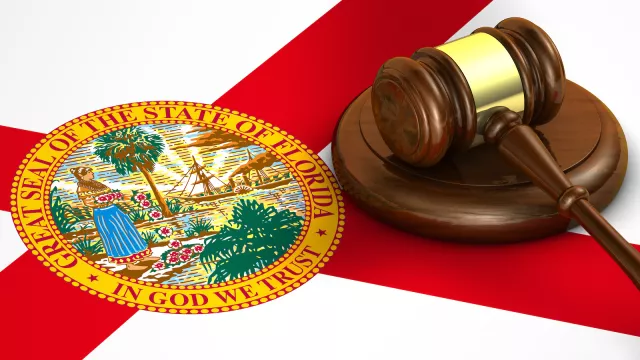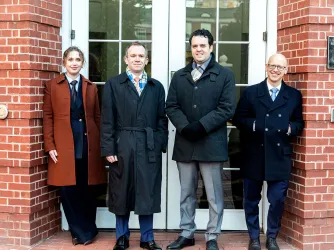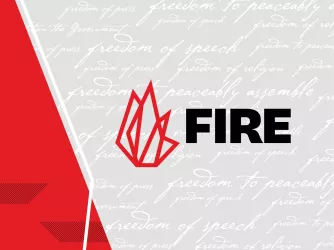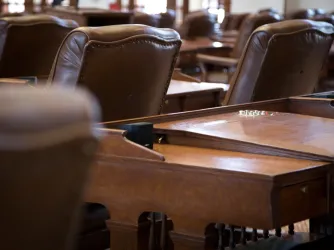Table of Contents
Why New York Times v. Sullivan matters more than ever

littlenySTOCK / Shutterstock.com
They say there’s no such thing as bad press, but it’s unlikely you’ll find too many politicians and public figures who can wholeheartedly agree. Their relationship with journalism and commentary — especially if it’s critical of them — has always been a contentious one.
And that’s a good thing.
If you’re a public figure or politician, there’s probably nothing you’d want more than to stop your critics from printing commentary you find unfair or damaging to your reputation. If you could sue for defamation, hit them in their wallets, and have that make other people think twice before coming after you, you’d probably sleep much easier at night.
The First Amendment’s guarantees of free speech and a free press limit those lawsuits — and for good reason. Using your political and financial power to bully critics into silence would make investigative journalism even more difficult, chilling critical reporting and severely hobbling our discourse and our democracy.
That’s what the Supreme Court decided in its landmark 1964 New York Times Co. v. Sullivan decision, which has deterred the powerful from using defamation lawsuits to intimidate and silence for more than 60 years, ruling that “debate on public issues should be uninhibited, robust, and wide-open.”
It should be no surprise, then, that Sullivan has been a target in recent years.
Sullivan has historically given countless Davids a fighting chance against a long line of Goliaths. Reversing the decision would be like taking away David’s sling and stones.
There have been numerous bids for the Supreme Court to overrule the Sullivan decision, and Justices Clarence Thomas and Neil Gorsuch have both expressed a willingness to revisit it. Politicians from former President Donald Trump to Florida Gov. Ron DeSantis have publicly attacked the Sullivan decision and its underlying arguments, and Florida state legislator Alex Andrade filed a bill in February 2023 designed to effectively overturn it.
Critics believe Sullivan gives the media unfettered license to publish defamatory coverage, leaving its victims with no recourse to respond. Many also believe overturning the decision would give regular people teeth to bite back against what they view as the media’s abuse of power.
But would reversing this 1964 Supreme Court precedent really protect the little guy and balance the scales?
Not at all. In fact, Sullivan has historically given countless Davids a fighting chance against a long line of Goliaths. Reversing the decision would be like taking away David’s sling and stones.
In this FIRE explainer, I’ll break down the details of the Sullivan decision, address current criticisms, and outline why reversing it would be disastrous for free expression, a free press, and the little guy.
New York Times v. Sullivan was a big deal
In 1960, civil rights activists ran a full-page advertisement in the The New York Times titled “Heed Their Rising Voices.” Its authors decried “Southern violators” — which included the police department of Montgomery, Alabama — for suppressing nonviolent protests at Alabama State College and harassing Dr. Martin Luther King, Jr.

This advertisement in The New York Times calls for support of the civil rights movement. (National Archives)
However, the ad’s list of grievances contained some inaccuracies. It claimed Dr. King was arrested seven times in Alabama, when it was actually four. It alleged Alabama police “ringed” the college after a peaceful protest, when in reality they only deployed nearby. It also claimed the protesting student body’s “dining hall was padlocked in an attempt to starve them into submission,” which never happened.
Though not explicitly named, Commissioner of the City of Montgomery L.B. Sullivan, who supervised the Montgomery Police Department, made note of these errors and took advantage of them. He filed a libel suit against four preachers whose names appeared in the advertisement and The New York Times, claiming their use of the word “police” in the ad implicated and directly defamed him.
Sullivan won in the Alabama state courts. A jury in the Circuit Court of Montgomery County awarded him $500,000 — the equivalent to more than $5 million today — and the Supreme Court of Alabama concurred.
The Supreme Court of the United States, however, came to a different decision when it heard the case in 1964. It ruled unanimously in favor of the paper and the preachers, concluding that the First Amendment limits the ability of public officials to use state libel law to stifle public debate. Most notably, the Court held public officials suing for libel must prove “the statement was made with ‘actual malice’ — that is, with knowledge that it was false or with reckless disregard of whether it was false or not.”

FIRE statement: Florida bill attacking NYT v. Sullivan would ‘spell disaster’ for free speech
Florida state Rep. Alex Andrade introduced HB 951, which would roll back free speech protections secured by one of the most important Supreme Court decisions: New York Times Company v. Sullivan.
In his opinion, Justice William Brennan emphasized that debate “may well include vehement, caustic, and sometimes unpleasantly sharp attacks on government and public officials.” In other words, the Court protected the press’ and the average citizen’s right to engage in democratic debate and criticism without worrying about the legal tantrums of public officials.
Sullivan’s libel suit wasn’t the only one filed against The New York Times over the “Heed Their Rising Voices” ad. In fact, five other libel claims were brought by Alabama officials, seeking a total of $3 million in damages — more than $28 million in today’s dollars. And that’s not all. Other officials in segregated states sued papers favorably covering the Civil Rights Movement, bringing the total potential damages to almost $300 million — just under $3 billion when adjusted for inflation.
Sullivan and his allies were taking advantage of defamation law to win significant verdicts against media outlets — deeply unpopular with juries in the deep south — that covered the Civil Rights Movement, making it costly to cover the authorities’ abuses.
Without the Sullivan decision, that kind of pressure may have bankrupted these papers and hindered perhaps the most important social movement in American history.
Does New York Times v. Sullivan protect falsehoods?
Addressing the inaccuracies in the advertisement Sullivan seized upon, the Supreme Court noted “erroneous statement is inevitable in free debate,” and echoed James Madison’s statement, recounted in “Elliot’s Debates on the Federal Constitution,” that, “Some degree of abuse is inseparable from the proper use of every thing; and in no instance is this more true than in that of the press.”
The “actual malice” standard protects people who make mistakes and those who genuinely believe what they are saying about powerful people, even if they’re wrong — but it does not protect deliberate falsehoods. And while the standard set in Sullivan is a high bar, the alternative would be worse, the Court observed:
A rule compelling the critic of official conduct to guarantee the truth of all his factual assertions — and to do so on pain of libel judgments virtually unlimited in amount — leads to a comparable ‘self-censorship.’ …Under such a rule, would-be critics of official conduct may be deterred from voicing their criticism, even though it is believed to be true and even though it is in fact true, because of doubt whether it can be proved in court or fear of the expense of doing so.
It should be clear who “the little guy” was in this case. The Court’s ruling protected the speech of those fighting for equality and freedom — and those reporting on it — when the odds were against them.
But have things changed? Is the bar now too high? Has the little guy — in this case, activists and the media — become the big guy? Critics seem to think so, but they’re wrong.
Is there valid criticism of New York Times v. Sullivan?
New York Times v. Sullivan is a necessary bulwark against self-censorship and the silencing of critics through financial and legal pressure. A few criticisms warrant grappling with, however.
One is that the eventual expansion of the decision’s scope to include public figures rather than just government officials is a problematic overextension. In two 1967 cases, Curtis Publishing Company v. Butts and Associated Press v. Walker, the Court held those with “sufficient continuing public interest” and “sufficient access to the means of counterargument,” are public figures analogous in power and influence to public officials, and therefore subject to the same protections outlined in Times v. Sullivan.
Perhaps more concerning to critics is the Supreme Court’s Gertz v. Welch decision, which extended the “actual malice” standard to “limited-purpose public figures,” such as participants in a specific public controversy.
Critics of Sullivan argue these subsequent expansions put everyday people — like Nicholas Sandmann, the “Covington Kid” who faced intense criticism after a video of him facing a Native American elder during a protest went viral — in a compromised position. The video appeared to show Sandmann and his Covington High School classmates wearing MAGA hats, taunting a Native American elder and instigating a confrontation. Longer videos were later released which added more context to the story, but not before Sandmann was thoroughly maligned in the press.
From the critics’ perspectives, Sandmann is David standing before the social media and legacy media Goliath, and he should have the right to sue and fight to protect his reputation.
New York Times v. Sullivan is a necessary bulwark against self-censorship and the silencing of critics through financial and legal pressure.
However, Sandmann already had that right, and he took full advantage of it. After the whirlwind of coverage he received, he sued various news outlets for defamation — and while he lost a few, he also reached a settlement with The Washington Post and others. Beyond that, multiple writers, journalists, and news outlets criticized the initial reporting of the incident, putting the truth into the public record in the same way the inaccuracies had been. All of this lends little credence to critics’ claims about Sandmann’s powerlessness in the face of bad reporting.
Another criticism of Sullivan is that proving “actual malice” is too difficult, allowing journalists and publications to get away with libel and defamation against public figures. This, again, is unfounded. The high bar certainly makes it harder to prove the claim, but it is far from impossible. Plenty of politicians and public figures have pursued and swayed juries in defamation cases.
Lowering the bar below actual malice would also make it more difficult to weed out defamation lawsuits filed not for legitimate cause but to bully and muzzle critics. Again, it’s not difficult to see who “the little guy” is in these scenarios.
Overturning Sullivan would imperil free speech
Sullivan is a case about the press, but it’s not just a press case. The Sullivan decision doesn’t protect only journalists, publications, or activists like the civil rights protestors who placed the “Heed Their Rising Voices” ad in 1960. It also extends to comedians and satirists, outspoken students and parents on social media, and anyone in any arena who chooses to comment on or criticize the actions and ideas of public figures, institutions, and elected officials.
Whether they’re right or wrong or whether you agree with them or not, these people are, by definition, “the little guy.” More often than not, they don’t have massive platforms, deep pockets, or the financial resources to defend themselves against the defamation claims of those with political and social power.
Sullivan protects those little guys. If a poorly worded comment or genuinely mistaken claim can lead to financial ruin, we’re going to be far less likely to make those comments or claims at all, even when we should. This would have a chilling effect on free expression and a free press, and would effectively prevent us from using the most fundamental tools of social change at our disposal: the right to speak, challenge, criticize, argue, and debate, even if those to whom we direct our ire have more money, power, and prestige than we do.
Explore FIRE's Supreme Court database of First Amendment court cases, opinions, overview essays, academic discussions, and other resources to get the full picture of how the culture of free speech and First Amendment law has developed in the United States.
Support FIRE's advocacy by making a free speech donation today.
Recent Articles
Get the latest free speech news and analysis from FIRE.

VICTORY: Jury finds Tennessee high school student’s suspension for sharing memes violated the First Amendment

DOJ must not investigate elected officials for criticizing immigration enforcement

FIRE statement on calls to ban X in EU, UK


